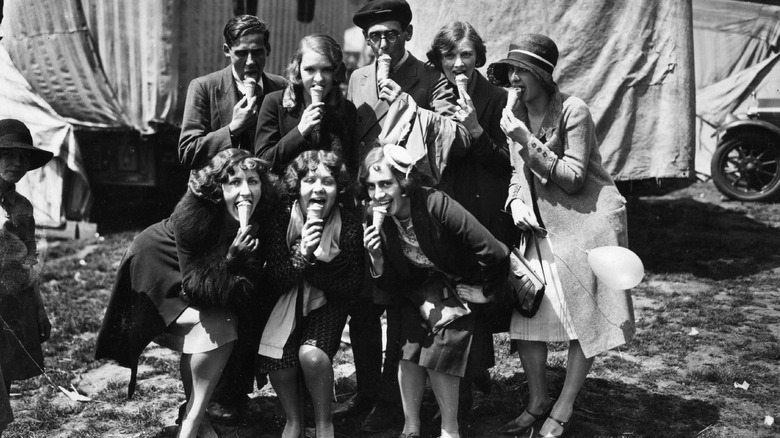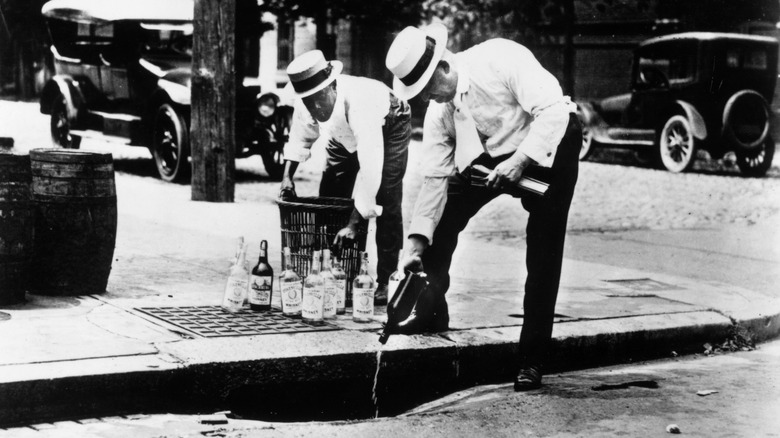Why Ice Cream Was So Popular During Prohibition
Americans and their love affair with sweets go back to colonial times. Cakes, pies, pastries, cobblers — they've always had a sweet tooth. One of the most popular choices for people today in the U.S. and the world over is ice cream. Although though the frozen concoction of cream and sugar now comes in countless flavors, colors, and textures, there was a time when ice cream was not as easily accessible as it is today.
According to the International Dairy Foods Association, until 1800, ice cream was an extremely rare treat often only enjoyed by society's elites. During the 1800s, technology improved to the point where making ice cream became a full-blown industry, and increased production led to a rise in popularity and a growth of consumers across the nation. Interestingly, there was one particular time during American history that saw ice cream explode in sales, and it's an era that you would not likely expect.
From manufacturing alcohol to producing ice cream
The 1920s are often portrayed as one giant party, with jazz music going and alcohol flowing like scenes in "The Great Gatsby." While it is true that jazz and alcohol were a part of the Roaring Twenties, one of those was actually banned at the beginning of the decade. History tells us that the United States Congress passed the Volstead Act in 1920, which banned the production and sale of alcohol across the country. As this ban nearly obliterated the alcohol industry, the booze manufacturers were forced to improvise or lose everything, so many of them began making ice cream.
While the money made on booze dropped more than $352 million, sales from this frozen dessert rose more than 40 percent in the same decade. And now that so much ice cream was being produced, it was time to get it to consumers, and one of the best places to get the treat in the '20s was your local soda fountain. Combining sodas and ice cream became commonplace and contributed greatly to the increase of frozen desserts to the average American. It was the combination of this distribution strategy, advancements in refrigeration technology, and lack of legal alcohol that influenced America's love affair with ice cream.

